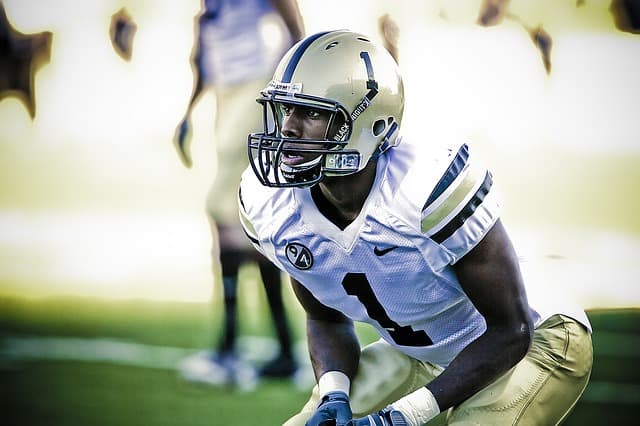A friend and semi-retired finance colleague who read Bobby McCormick and Bob Tollison’s insightful post on Subversion of the Academy by the NCAA wondered where this goes. He readily admits the negative influences of the hybrid amateur-professional system discussed by M-T but comments, “I don’t see any obvious end to this situation.”
I agree. As M-T notes, the only real solutions are to go with options that most university presidents will find unpalatable: Ivy (complete amateur) or entirely professional. Yet, any other “solutions” only superficially address the underlying amateur-pro mismatch and inevitable effort of dollars (or non-cash inducements) that try to get from the pro side to the amateur side:
1. Leak a few more dollars from the professional side to the amateur side: this is the current talk in the NCAA meetings. A little more money for laundry, meals, … The impotence of such moves to address the vast dollar imbalances of revenue gained versus player value at mega-producers is too obvious to discuss.
2. Re-organization: when current Ohio State president Gordon Gee oversaw Vanderbilt, he initiated a much self-touted move to eliminate the athletics department. Of course, he kept Vandy in the revenue-rich, professional-equivalent SEC conference rather than opting to “go Ivy” and start playing football at the Division III level. Somehow, having someone with a title other than “athletics director” would solve the problems. OK, we can check that off without much discussion also.
3. Increase/Decrease the number of rules: restrictions on payments creates non-cash inducements and advantage-seeking from essential things (like loans) to small items (hosting recruits in the coach’s home). The NCAA has spent the last 25-years adopting ever-more detailed restrictions on these inducements/advantages — it’s merely an exercise in fingers-in-the-dike. As soon as you plug one in, creative people find another, and the rules are hard to enforce. This brings about the counter-argument, “get rid of all the minute rules and focus on the big stuff like illicit payments.” That move only resets the clock to the 1970s and restarts the full array of non-cash inducements-advantages that led to the adoption of all the minutia.
4. Raise the cost of violations: this option does reduce violating activity to some extent, especially when the costs are severe. The death penalty at SMU scared that school away from illicit activities for two decades, but it came with a considerable price so high — emasculation of the program — that the NCAA didn’t go down that road again. Through NCAA lobbying and encouragement, most states criminalized some kinds of benefits to players, particularly those flowing through agents. Nonetheless, underground activity persists by agents and non-agent boosters.
In the spring, the NCAA lobbied the NFL to penalize players based on violations of NCAA rules. The NFL said not much on this matter — presumably, they are not real keen on becoming an enforcement tool of the NCAA. Seemingly, technology and the 24/7 coverage of sports have increased the ability of the media and NCAA to ferret out violations. Somebody stands ready to tweet-out coach and player violations with fantastic speed. These “raise the stakes” solutions do not wipe away the underlying basis of the problem — the amateur-professional mix. Even with highly criminalized activities like drugs, where there is money or advantage to be gained, it’s impossible to eliminate all or even most underground movements, not to mention the negative of getting everybody from the state government, the NFL, to some guy on the street involved in the NCAA enforcement scheme.
So, we are back with the M-T solution: going Ivy or going full-bore pro without the restrictions on paying players. But, how can schools/conferences “go pro” without blowing up the system altogether? After all, courts, while explicitly recognizing the commercial-professional aspects of college football and basketball, have been reluctant to impose typical rules of commerce on higher ed institutions. Judges (whether liberal or conservative ideologically) tend to be very conservative on such issues — they recognize the vast and politically powerful fan base. They are reluctant to overturn such a valued part of society.
My suggestion — very, very unlikely but practical in its details — is to set up athletic teams as separate organizations (for-profit or not-for-profit like the PGA) that pay royalties to academic institutions to use the brand name and rent on facilities. These teams would pay players just as any major or minor league team. Such a system also removes the Title IX restrictions of the revenue-producing pro teams that are spun off from the genuinely amateur sports that continue as part of the university and under the rules of Title IX.
In a different historical world, football and basketball would have developed like baseball with parallel tracks for 18-year-old players — for those seeking payment, an explicitly professional minor-league world, and for those interested in academics or the college experience, a (mostly) amateur world of college baseball. College baseball is not wholly removed from the amateur-pro problems of football and basketball, but the problems in baseball are much reduced.
The trouble is that after football and basketball developed without extensive minor league systems, there is no way to jump over to such a world. College teams have too much brand name capital built up for start-up minor league teams to compete so that, for instance, NBA D-League teams play only in college-poor areas.


Comments are closed.